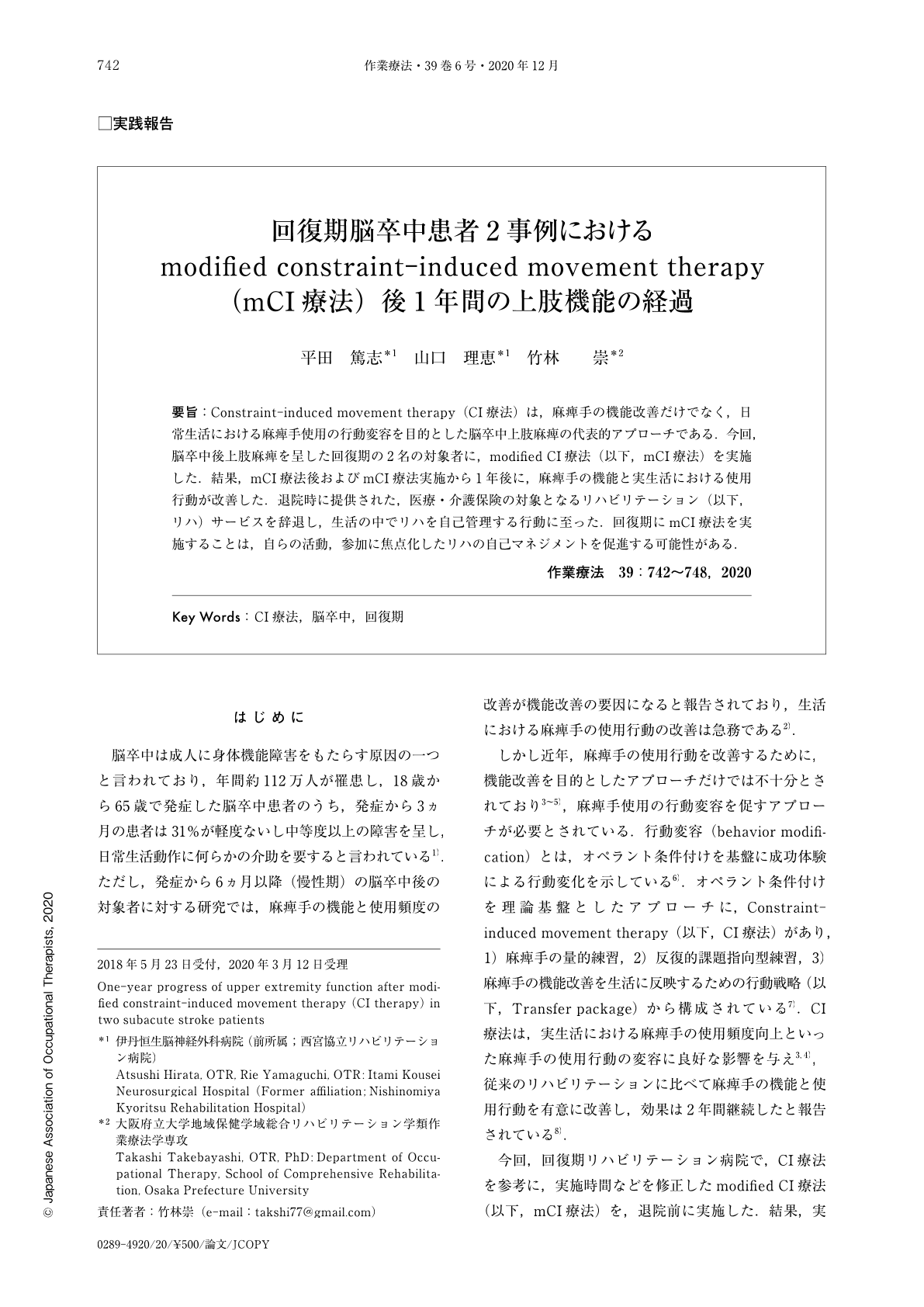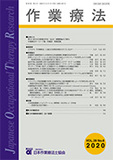Japanese
English
- 販売していません
- Abstract 文献概要
- 1ページ目 Look Inside
- 参考文献 Reference
要旨:Constraint-induced movement therapy(CI療法)は,麻痺手の機能改善だけでなく,日常生活における麻痺手使用の行動変容を目的とした脳卒中上肢麻痺の代表的アプローチである.今回,脳卒中後上肢麻痺を呈した回復期の2名の対象者に,modified CI療法(以下,mCI療法)を実施した.結果,mCI療法後およびmCI療法実施から1年後に,麻痺手の機能と実生活における使用行動が改善した.退院時に提供された,医療・介護保険の対象となるリハビリテーション(以下,リハ)サービスを辞退し,生活の中でリハを自己管理する行動に至った.回復期にmCI療法を実施することは,自らの活動,参加に焦点化したリハの自己マネジメントを促進する可能性がある.
Constraint-induced movement therapy (CI therapy) is a representative approach for stroke patients that aims not only to improve the function of the paralyzed arm, but also to change the behavior of actual use of the arm in activities of daily living. This study employed the modified CI therapy for 2 stroke patients with arm paresis in the subacute phase. Consequently, the affected arm functions and real-world behaviors of the patients improved immediately, and maintained the improvement one-year after the modified CI therapy. Furthermore, the two patients refused the rehabilitation service covered by the medical and nursing-care insurance and were able self-manage their care. Therefore, implementing modified CI therapy in the subacute phase may promote rehabilitative self-management.

Copyright © 2020, Japanese Association of Occupational Therapists. All rights reserved.


